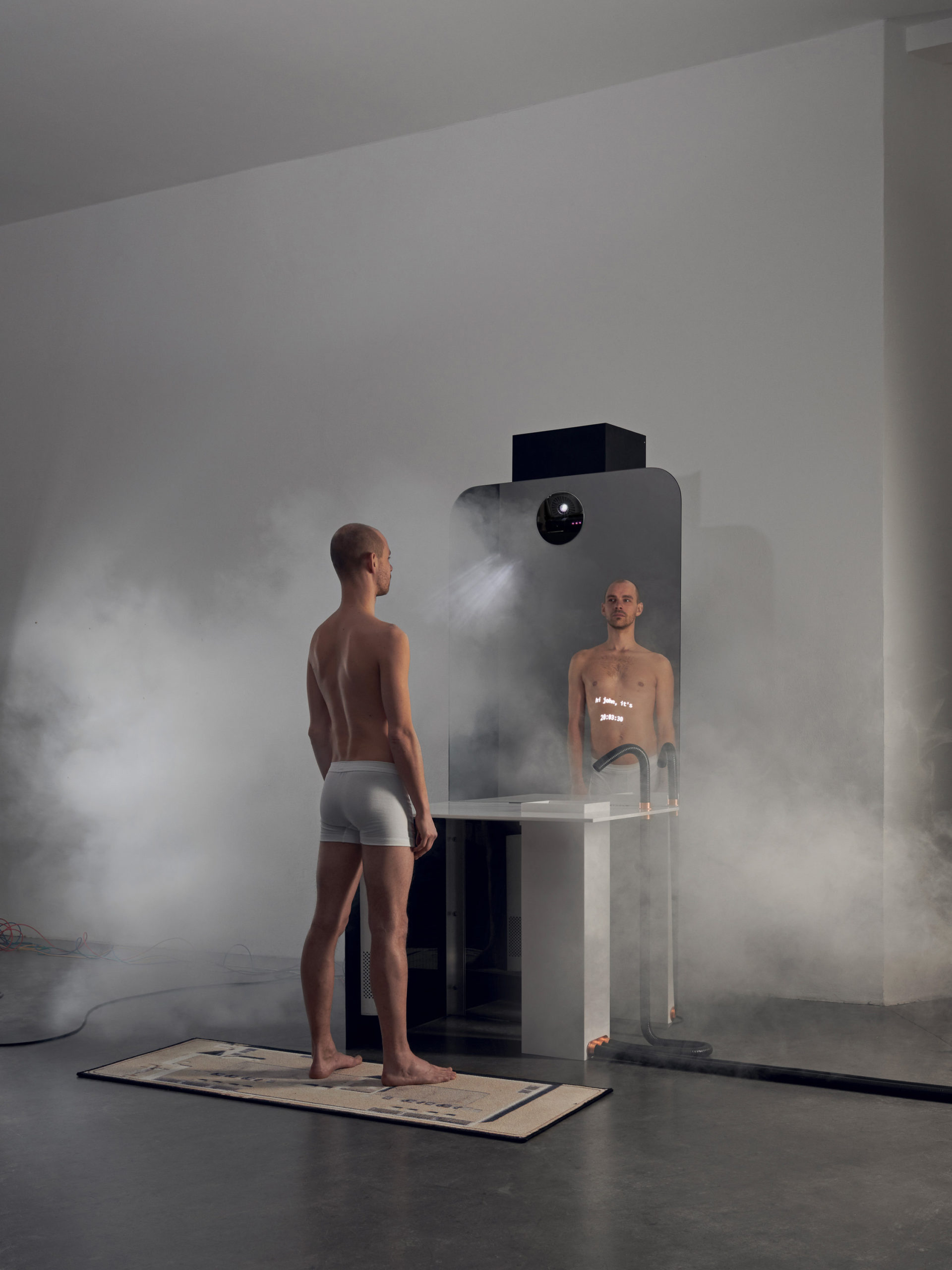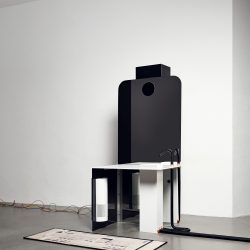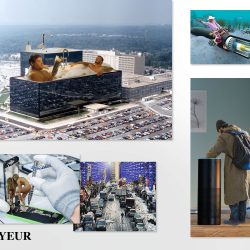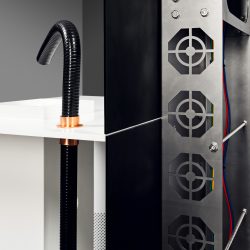VOYEUR (vorher DATADATADATA)
Description
VOYEUR (formerly DATADATADATA) is a vanity installation composed of a mirror, a sink, a cosmetic bin, a towel rack and a bath mat. Hidden inside is a system with a camera, a database and an artificial intelligence, analyzing and evaluating the viewer. The results are projected on the viewer's body.What is the Topic?
and a faucet in the form of deep sea fiber optic cables. Sink and carpet are based on the architecture and satellite imagery of the NSA headquarters. The shifted proportions and abstractions create metaphors and links, expressing pointedly the key findings of my research. Data flow and water flow. The human as a ghost in the smartphone. Trash-Data.
Why does it look like this?
As a critical design object, VOYEUR aims to stimulate discourse. To achieve that, symbolic objects were researched and composed into an assemblage. These were arranged as part of the private bathroom as follows: An oversized, upside-down smartphone as a mirror; Two voice-assistants as sanitary bins; A server cabinet as a towel holder and a faucet in the form of deep sea fiber optic cables. Sink and carpet are based on the architecture and satellite imagery of the NSA headquarters. The shifted proportions and abstractions create metaphors and links, expressing pointedly the key findings of my research. Data flow and water
What is special?
As viewers are approaching VOYEUR, they are tracked with a camera system. The images are processed by an artificial intelligence that rates and catagorizes the viewer. A process smart objects usually do in secret is made visible. The viewer serves as a projection screen. In the mirror, he can read from his own body, what the program is currently doing and what intransparent value it calculated for him or her. The camera system recognizes the viewer on return and causes a strong irritation, which is often the basis for conversations about ones own relationship to technology. This process is illustrates a fundamental change in our relationship to objects, which has been taking place for several years. The spatial independence of functionality and object increases. Thus, objects can become agents of the actors on the other end of the line, the voyeurs.
What is new?
The relationship between object and user is always changing according to social and technical developments. During my research I realized how fundamental and long-lasting network functionality and digitalization will change the rules of our relationship to objects. In my opinion, we designers have to start right now to debate the positive and negative aspects of this development. In addition to this insight, I consider the formal approach of the design object assemblage to be new.






